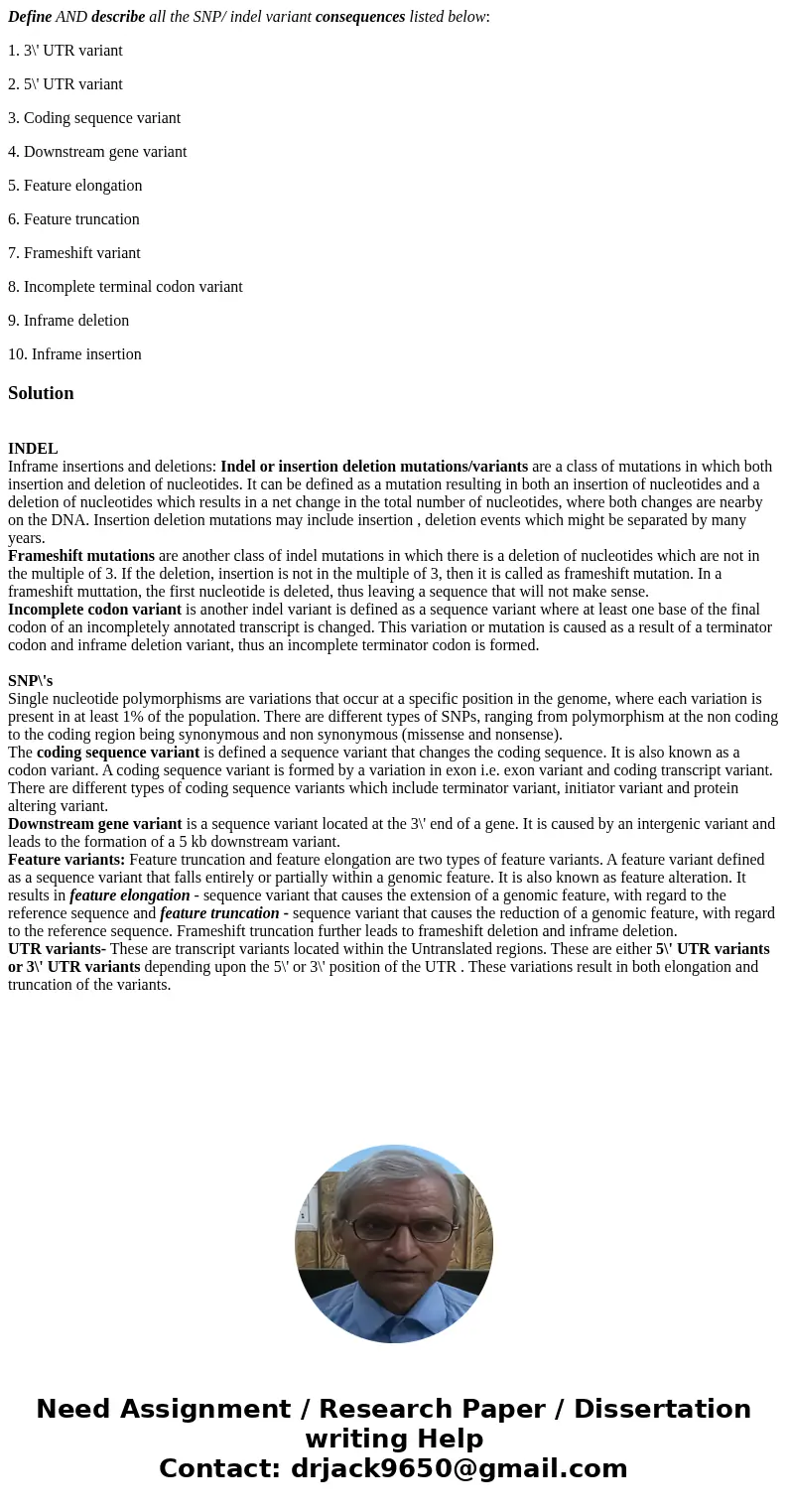Define AND describe all the SNP indel variant consequences l
Define AND describe all the SNP/ indel variant consequences listed below:
1. 3\' UTR variant
2. 5\' UTR variant
3. Coding sequence variant
4. Downstream gene variant
5. Feature elongation
6. Feature truncation
7. Frameshift variant
8. Incomplete terminal codon variant
9. Inframe deletion
10. Inframe insertion
Solution
INDEL
Inframe insertions and deletions: Indel or insertion deletion mutations/variants are a class of mutations in which both insertion and deletion of nucleotides. It can be defined as a mutation resulting in both an insertion of nucleotides and a deletion of nucleotides which results in a net change in the total number of nucleotides, where both changes are nearby on the DNA. Insertion deletion mutations may include insertion , deletion events which might be separated by many years.
Frameshift mutations are another class of indel mutations in which there is a deletion of nucleotides which are not in the multiple of 3. If the deletion, insertion is not in the multiple of 3, then it is called as frameshift mutation. In a frameshift muttation, the first nucleotide is deleted, thus leaving a sequence that will not make sense.
Incomplete codon variant is another indel variant is defined as a sequence variant where at least one base of the final codon of an incompletely annotated transcript is changed. This variation or mutation is caused as a result of a terminator codon and inframe deletion variant, thus an incomplete terminator codon is formed.
SNP\'s
Single nucleotide polymorphisms are variations that occur at a specific position in the genome, where each variation is present in at least 1% of the population. There are different types of SNPs, ranging from polymorphism at the non coding to the coding region being synonymous and non synonymous (missense and nonsense).
The coding sequence variant is defined a sequence variant that changes the coding sequence. It is also known as a codon variant. A coding sequence variant is formed by a variation in exon i.e. exon variant and coding transcript variant. There are different types of coding sequence variants which include terminator variant, initiator variant and protein altering variant.
Downstream gene variant is a sequence variant located at the 3\' end of a gene. It is caused by an intergenic variant and leads to the formation of a 5 kb downstream variant.
Feature variants: Feature truncation and feature elongation are two types of feature variants. A feature variant defined as a sequence variant that falls entirely or partially within a genomic feature. It is also known as feature alteration. It results in feature elongation - sequence variant that causes the extension of a genomic feature, with regard to the reference sequence and feature truncation - sequence variant that causes the reduction of a genomic feature, with regard to the reference sequence. Frameshift truncation further leads to frameshift deletion and inframe deletion.
UTR variants- These are transcript variants located within the Untranslated regions. These are either 5\' UTR variants or 3\' UTR variants depending upon the 5\' or 3\' position of the UTR . These variations result in both elongation and truncation of the variants.

 Homework Sourse
Homework Sourse